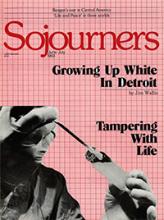When former President Jimmy Carter first proposed the MX missile system in 1979, it consisted of 200 missiles with ten warheads each that would be shuttled among several hundred shelters along a huge racetrack in the Utah desert. The claim was that a mobile system was needed to close the recently discovered "window of vulnerability" on U.S. land-based missiles. The plan fell victim to its enormous financial and ecological costs, and to the reluctance of Utahans to become the target for the brunt of any possible Soviet attack.
The racetrack shell game was followed by a succession of bizarre, and ultimately rejected, proposals that included placing the missiles on submarines that would wander endlessly up and down our coasts, keeping them in perpetually aloft airplanes, and finally Reagan's dense pack scheme that Congress rejected last year. If nothing else, the MX became one of the richest sources of political satire since the Nixon administration.
Finally after the dense pack debacle, Reagan appointed a special commission to evaluate U.S. strategic policy, specifically to make a final, once-and-for-all recommendation about the MX. The president indicated the gravity he attached to the issue by the make-up of the 11-member commission. It included John McCone, James Schlesinger, Alexander Haig, and Henry Kissinger himself, as well as several other former secretaries of defense.
As would be expected, the commission recommended the deployment of a scaled-down version of the MX program. But in their desperation to save the MX, these Brahmins of the defense and foreign policy establishment implicitly admitted that the very arguments many of them had previously made for the MX were actually fraudulent. With the commission's decision to base the MX in existing Minuteman missile silos, the old window of vulnerability officially joins the notorious missile gap of 1960 in the museum of great nuclear hoaxes.
Read the Full Article

